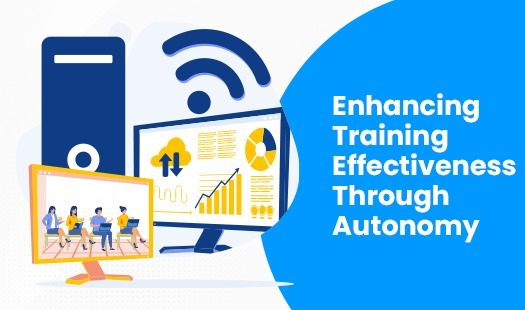
Learner autonomy is essential for effective workplace training because it allows learners to direct their learning path. This article addresses the benefits, obstacles, and techniques for establishing learner autonomy and promotes its use in training.
Understanding Learner Autonomy
Learner autonomy, often known as autonomous learning, is how learners assume responsibility for their training. It converts a one-size-fits-all approach into a personalized and engaging experience, increasing training efficacy and catering to individual preferences in educational environments.
Benefits of Learner Autonomy
Increased Engagement and Motivation
Learners who control their learning experience are more inclined to participate, resulting in more intrinsic motivation and engagement. This ownership motivates workers to participate in appropriate training modules, promoting optimism and hope for professional development. This creates a sense of ownership in the learning process.
Enhanced Retention and Critical Thinking
Active learning improves information retention and critical thinking, essential in business settings. Autonomous learning promotes critical thinking and problem-solving skills, allowing sales teams to autonomously test tactics, resulting in more successful and specialized approaches.
Personalized Learning Experiences
Autonomy enables tailored learning routes that respond to each learner’s skills, limitations, and interests. This guarantees that training is relevant and efficient, minimizing extraneous information and concentrating on areas for development.
Challenges of Implementing Learner Autonomy
Access to Resources
To learn autonomously, learners must have access to high-quality content. Businesses must invest in complete Learning Experience Platforms (LXPs) that provide a range of materials.
Guidance and Support
Even with autonomy, learners require assistance to navigate their educational courses. Mentoring, coaching, and AI-driven recommendations may help students make educated decisions and stay motivated.
Measuring Effectiveness
Measuring the efficiency of self-directed learning can pose challenges. To overcome these, organizations need to establish precise measurements and feedback channels that evaluate employee engagement, completion rates, and the application of new skills in the workplace.
Practical Strategies for Implementing Learner Autonomy
Offer a Variety of Learning Resources
Provide a variety of resources to accommodate varied learning styles and preferences. This can contain movies, essays, interactive modules, and case studies, allowing students to select what resonates with them.
Empower Goal Setting
Encourage students to develop personal learning objectives. This customization improves engagement and guarantees that the training is relevant to their professional development.
Incorporate Choice Activities
Introduce activities that allow students to make choices regarding their learning paths. For example, branching situations in simulations or providing several paths to achieving a learning goal can increase interest.
Promote Self-Assessment
Incorporate self-reflection tasks and quizzes into the training curriculum. This enables students to track their progress and take responsibility for their learning experience.
Foster Collaboration and Community
Create chances for learners to interact and share their experiences via discussion forums, peer mentorship, and online communities. This social learning feature improves the learning experience and fosters a supporting network.
Organizations may improve training efficacy by encouraging learner autonomy enhancing engagement, retention, and critical thinking. This promotes a culture of continuous learning, resulting in a dynamic, empowered workplace that matches the changing demands of the workforce, making this transition critical in today’s quickly changing world.

